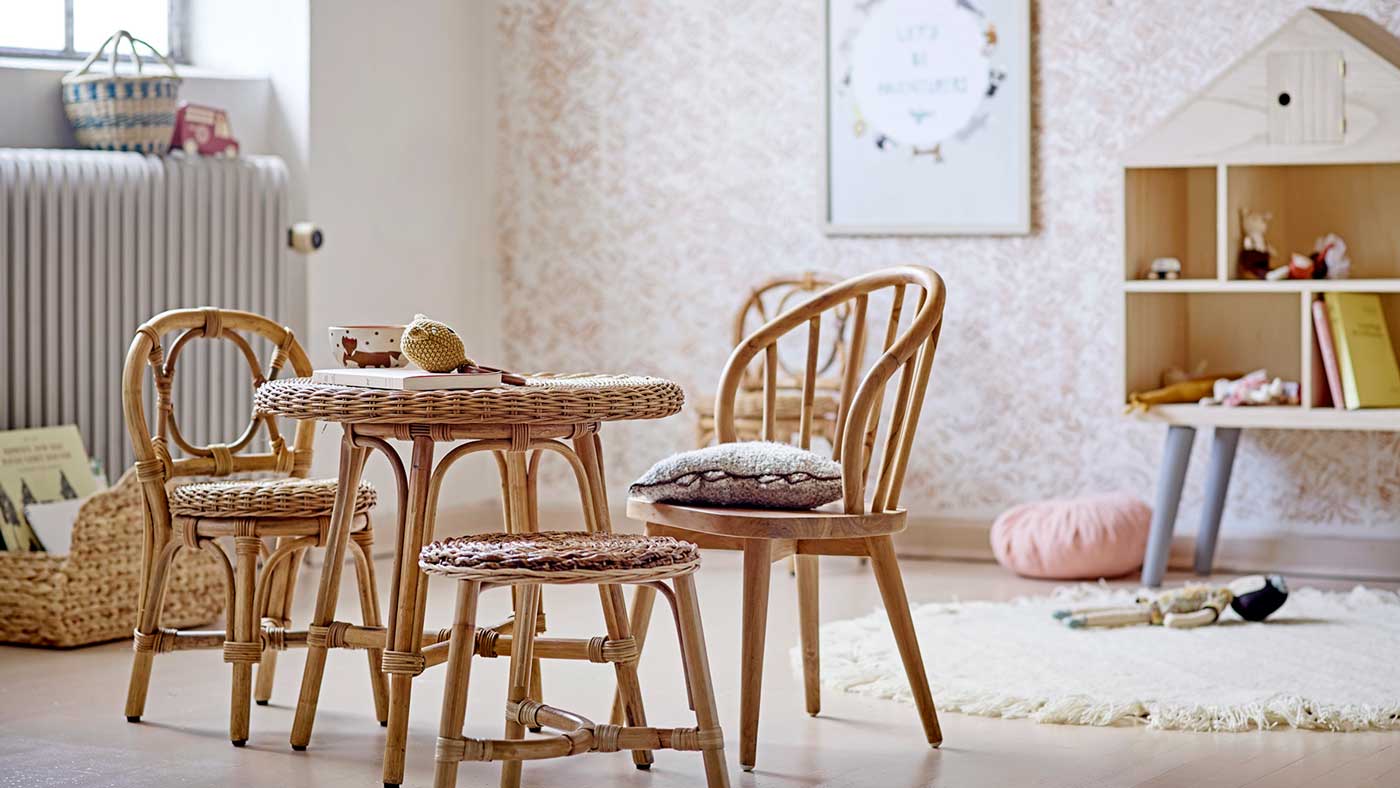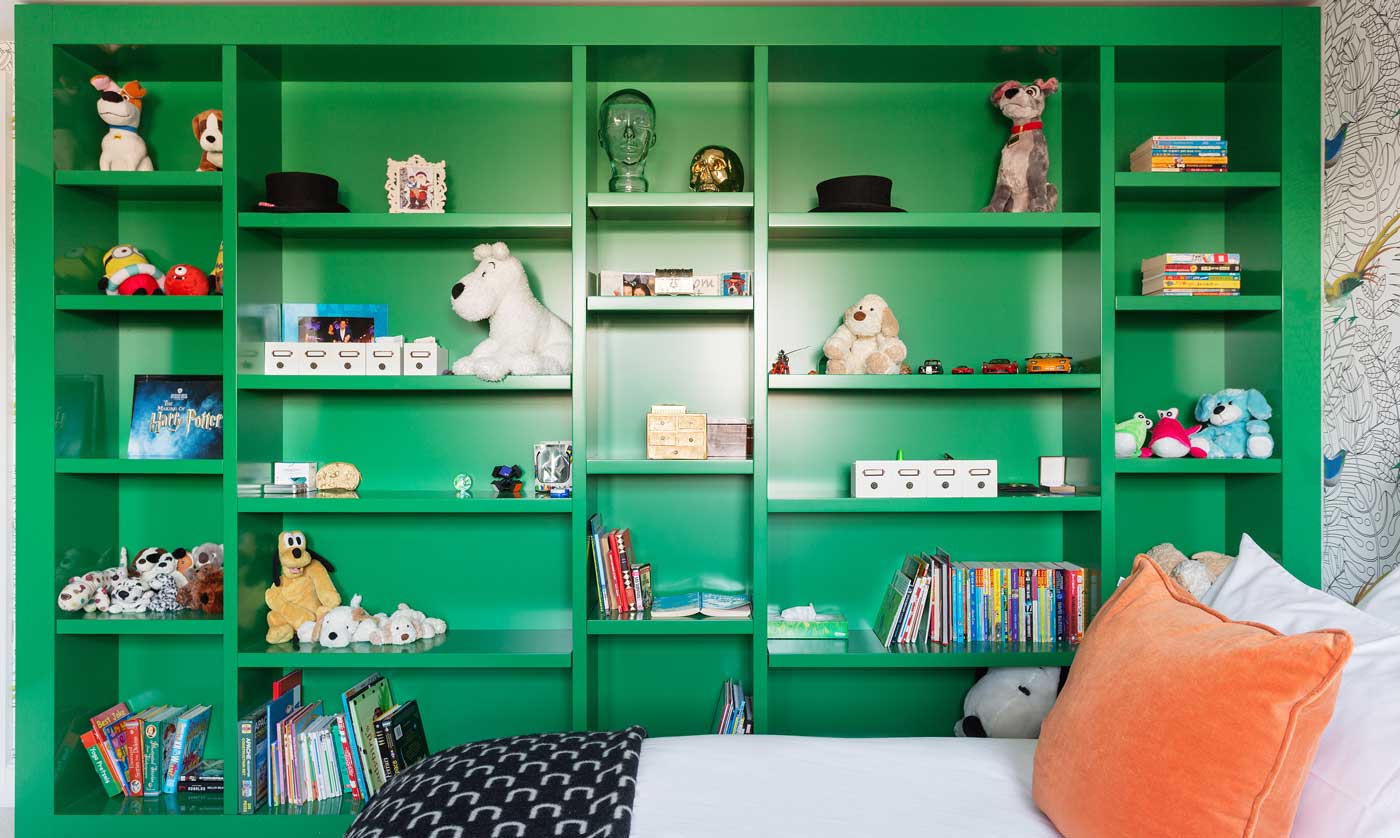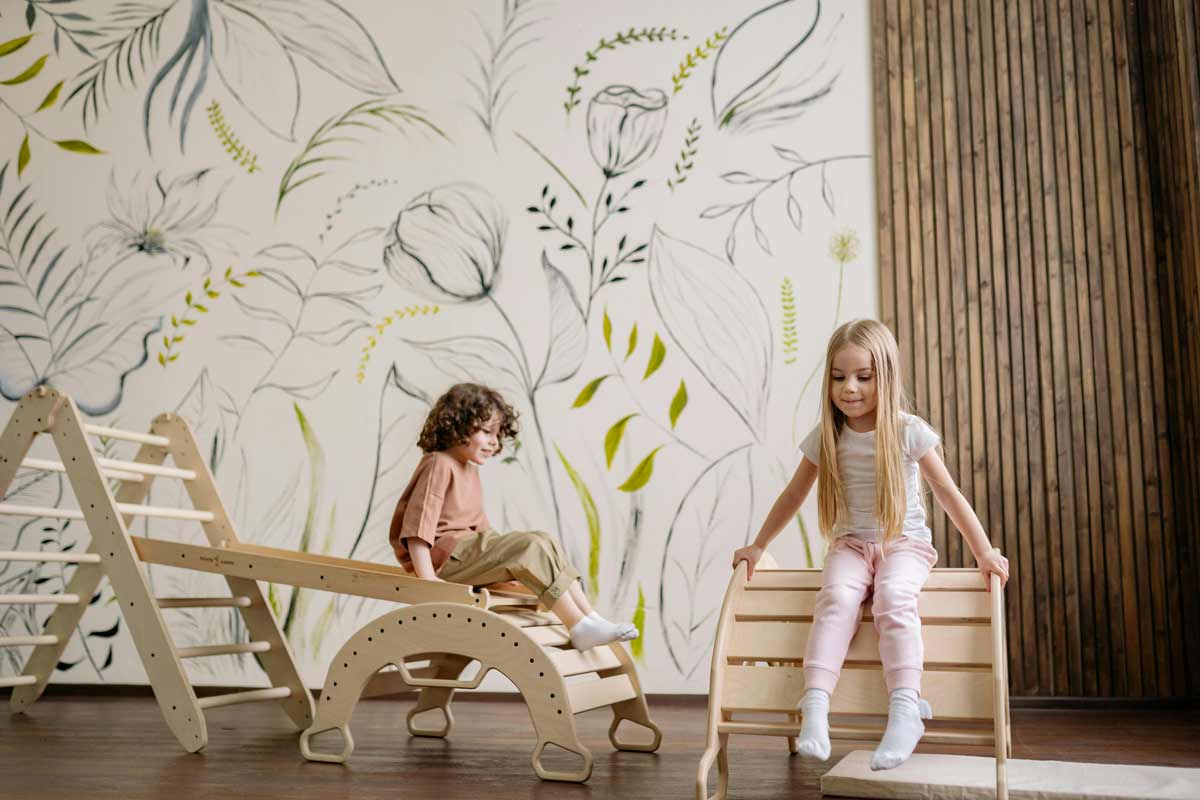Introduction to Smart and Safe Spaces for Children
The Evolving Needs of Modern Nurseries and Playrooms
In today’s fast-paced world, nurseries and playrooms are no longer just simple spaces filled with toys and baby furniture. They are becoming dynamic, multi-functional environments designed to nurture children’s growth while offering maximum safety and convenience for parents. The modern family demands spaces that are not only adorable and comfortable but also smart, secure, and adaptable to a child’s developmental stages.
The integration of smart technology, eco-friendly materials, and cutting-edge design principles creates an environment where children can explore safely, learn actively, and rest peacefully. This new era of nursery and playroom design is all about anticipating the needs of both the child and the family, offering peace of mind and practical solutions.
Why Safety and Smart Technology Integration Matters
Safety is paramount in any space dedicated to young children. Every element—from the choice of materials to furniture layout—must eliminate risks such as choking hazards, falls, toxic exposure, and electrical dangers. But beyond traditional safety measures, the future-forward nursery leverages smart technology to offer proactive protection.
Smart monitors track breathing and movement, sensors alert parents to unsafe temperature or humidity, and connected devices can automate lighting and sound to soothe babies or signal playtime. These innovations reduce parental anxiety and create a nurturing environment that adapts instantly to the child’s needs.
Enhancing Child Development and Parental Peace of Mind
A nursery or playroom designed with both smart features and safety at its core promotes healthier child development. Controlled lighting encourages natural sleep cycles; interactive tech supports cognitive skills; and clean air systems reduce respiratory risks. Meanwhile, parents enjoy the comfort of remote monitoring, voice-activated controls, and automated routines.
This fusion of technology and design ultimately transforms the nursery from a static room to a responsive, intelligent space that grows alongside your child, making parenting a more manageable and joyful journey.

Key Features of Future-Ready Nurseries and Playrooms
Smart Safety Devices: Monitors, Sensors, and Automated Alerts
Modern nurseries harness advanced smart safety technology to offer real-time protection. Baby monitors have evolved beyond simple audio and video; today’s devices track breathing patterns, room temperature, and humidity, sending instant alerts to parents’ smartphones if anything unusual is detected. Motion sensors detect when children leave safe zones, and smart plugs ensure electrical outlets are child-proofed automatically.
Some top-tier systems integrate AI to analyze sleep patterns and suggest adjustments, such as altering room temperature or lighting to improve rest quality. These features collectively create a safety net that is always alert, minimizing risks and empowering parents with immediate, actionable information.
Eco-Friendly and Non-Toxic Materials
The foundation of a safe nursery starts with the materials chosen. The future nursery emphasizes:
-
Low VOC (volatile organic compounds) paints and finishes that prevent harmful chemical exposure
-
Natural, organic fabrics and bedding that reduce allergens and skin irritation
-
Sustainable wood and recycled materials for furniture, supporting environmental responsibility
-
Hypoallergenic flooring options like cork or bamboo that are soft, durable, and easy to clean
Choosing eco-friendly materials not only protects your baby’s health but also contributes to a healthier planet for their future.
Modular and Adaptable Furniture for Growing Kids
Children grow fast, and their nursery or playroom needs to keep pace. Modular furniture systems that convert from crib to toddler bed, or stackable storage units that can be reconfigured, are crucial. This adaptability saves money and space while providing age-appropriate comfort and functionality.
Designers recommend furniture with rounded edges, non-toxic finishes, and lightweight yet sturdy construction for easy rearrangement. Future-ready pieces often incorporate built-in charging stations or smart device docks to accommodate growing technology needs.

Designing-Magical-Nursery-Playroom-Spaces
Integrated Learning and Play Technology
Smart design goes beyond safety into active development support. Playrooms equipped with interactive walls, smart tables, and augmented reality (AR) toys engage children’s senses and creativity. These technologies adapt to learning stages, offering educational games that improve language, motor skills, and problem-solving.
Voice-controlled assistants allow parents to customize playtime with music, stories, or guided activities. This integration fosters a dynamic environment where play and learning happen seamlessly, preparing children for a tech-forward world.
Climate Control and Air Quality Management
Optimal air quality and comfortable temperatures are non-negotiable for infant health. Future nurseries use smart HVAC systems paired with air purifiers that monitor and adjust room conditions automatically. Features include:
-
Real-time CO2 and humidity level sensors
-
HEPA filtration to reduce dust and allergens
-
Temperature control that maintains steady warmth without overheating
These systems reduce illness risks and support better sleep, essential for young children’s growth and wellbeing.
Design Tips and Trends for Smart and Safe Spaces
Minimalistic, Clutter-Free Design for Safety and Focus
A cluttered nursery or playroom not only overwhelms a child’s senses but also increases safety hazards such as tripping or choking risks. Modern design embraces minimalism—using only essential, multi-functional furniture and smart storage solutions that keep toys and supplies neatly organized.
By reducing distractions, this approach helps children focus better on play and learning while making it easier for parents to maintain a safe environment. Clear pathways, rounded edges, and non-slip flooring are key elements in crafting a safe, minimalist space.
Use of Calming Colors and Sensory-Friendly Textures
Color psychology plays a crucial role in nursery and playroom design. Soft pastels, gentle greens, and muted blues create calming environments that soothe children, reduce anxiety, and promote restful sleep.
Additionally, sensory-friendly textures like plush rugs, knitted cushions, and smooth wooden surfaces stimulate tactile development without overwhelming young senses. Designers are now incorporating fabrics with varying textures to engage children in subtle sensory exploration safely.
Smart Lighting and Sound Systems to Aid Sleep and Learning
Lighting impacts both mood and biological rhythms. Future-ready nurseries utilize smart lighting systems that can mimic natural daylight patterns—bright and energizing during the day, dim and warm in the evening to prepare children for sleep.
Integrated sound systems play white noise, lullabies, or nature sounds on command or on a schedule, aiding sleep and creating a serene environment for play or rest. Voice-activated controls offer parents hands-free convenience to adjust settings as needed.

Designing-Magical-Nursery-Playroom-Spaces
Storage Solutions That Keep Toys Organized and Out of Harm’s Way
Smart storage goes beyond simple shelves and bins. Modular storage units with child-safe locks, wall-mounted organizers, and under-bed drawers maximize space while keeping small objects out of reach when necessary.
Innovative storage also involves labeling systems with images and words to encourage children to tidy up independently, fostering responsibility and reducing mess-related hazards.
Personalization Through Tech-Enabled Decor and Interactive Walls
Personalization makes the nursery a special, engaging space. Future designs incorporate interactive walls with touch-sensitive panels that display calming animations, educational content, or family photos.
Parents can update these digital canvases remotely, tailoring visuals and sounds to the child’s developmental stage or mood. This blend of decor and technology transforms the room into a stimulating yet safe environment that evolves as the child grows.
Budgeting and Planning Your Smart Nursery & Playroom
Prioritizing Technology Investments vs Traditional Safety Features
| Feature Category | Examples | Average Cost Range (USD) | Pros | Cons | Recommended For |
|---|---|---|---|---|---|
| Smart Safety Devices | Baby monitors, motion sensors | $100 – $500 | Real-time alerts, remote monitoring | Requires Wi-Fi, initial setup needed | Tech-savvy parents, large nurseries |
| Traditional Safety Gear | Outlet covers, corner guards | $10 – $50 | Low cost, simple to install | No remote alerts, limited coverage | Budget-conscious families |
| Eco-Friendly Materials | Organic bedding, low VOC paints | $200 – $1,000+ | Healthier environment, sustainable | Higher upfront cost | Environmentally focused families |
| Modular Furniture | Convertible cribs, stackable storage | $300 – $1,500 | Long-term savings, space-efficient | May require assembly | Growing families, small spaces |
Eco-Friendly Material Cost Comparison
| Material Type | Average Price per Sq. Ft. (USD) | Durability | Safety Rating | Environmental Impact | Maintenance Needs |
|---|---|---|---|---|---|
| Bamboo Flooring | $5 – $8 | High | Excellent | Renewable, biodegradable | Low, easy to clean |
| Cork Flooring | $3 – $7 | Medium | Excellent | Renewable, recyclable | Medium, avoid moisture |
| Organic Cotton Fabric | $15 – $30 per yard | High | Excellent | Sustainable, non-toxic | Low, machine washable |
| Low VOC Paint | $30 – $60 per gallon | High | Excellent | Low chemical emissions | Low, regular touch-ups |
Smart Technology Features: Cost vs Benefits
| Technology | Initial Cost (USD) | Maintenance Cost | Key Benefits | Potential Drawbacks | ROI Timeline |
|---|---|---|---|---|---|
| AI Baby Monitors | $200 – $600 | Low | Improved safety, sleep tracking | Higher price, tech learning curve | 1-2 years |
| Smart HVAC Controls | $300 – $700 | Low | Air quality, energy savings | Installation complexity | 2-3 years |
| Automated Lighting | $150 – $400 | Very low | Sleep cycle regulation | Requires compatible fixtures | 1-2 years |
| Interactive Play Walls | $500 – $1,500 | Medium | Cognitive stimulation | Expensive, possible obsolescence | 3+ years |
Planning for Scalability: Furniture Adaptation Over Time
| Age Range | Recommended Furniture Type | Features | Cost Estimate (USD) | Longevity (Years) | Upgrade Suggestions |
|---|---|---|---|---|---|
| 0-2 years | Convertible crib, soft play mats | Safety rails, cushioned edges | $400 – $800 | 2 years | Transition to toddler bed |
| 2-5 years | Toddler bed, modular storage bins | Easy reconfiguration | $300 – $600 | 3 years | Add study desk and chair |
| 5-10 years | Desk and chair set, expandable bookshelves | Ergonomic design | $400 – $900 | 5 years | Upgrade to tech-enabled desk |
| 10+ years | Standard bed, tech-integrated furniture | Charging stations, smart desks | $500 – $1,200 | 5+ years | Add interactive wall panels |
DIY Smart Upgrades for Cost-Conscious Parents
| Upgrade Type | Estimated Cost (USD) | DIY Difficulty Level | Benefits | Time to Complete |
|---|---|---|---|---|
| Smart Plug Outlets | $20 – $40 | Easy | Remote device control | 1-2 hours |
| Voice-Controlled Lights | $30 – $70 | Medium | Hands-free lighting adjustments | 2-3 hours |
| Sensor-Activated Night Lights | $15 – $30 | Easy | Safety lighting during nighttime | 1 hour |
| Air Quality Monitor | $50 – $150 | Medium | Real-time environment tracking | 1-2 hours |
This data-driven part guides families to budget wisely, balance smart tech with traditional safety, and plan for flexible, growing spaces.
Expert Advice, FAQs, and Final Checklist
Expert Advice From Leading Child Safety and Design Professionals
Dr. Emily Harper, Pediatric Safety Specialist:
“The safest nurseries integrate technology without overwhelming the child’s environment. Simple smart monitors combined with traditional childproofing offer the best peace of mind for parents.”
Anna Reynolds, Interior Designer for Children’s Spaces:
“Design should evolve with the child. Invest in modular, convertible furniture that grows with your family. Also, sensory-friendly textures are game changers for both stimulation and calm.”
Marcus Liu, Smart Home Technology Expert:
“Voice-controlled lighting and climate systems make managing the nursery effortless and help regulate baby’s circadian rhythm, improving sleep patterns and overall health.”
Frequently Asked Questions (FAQs)
Q1: Are smart devices safe for babies?
Yes, as long as they are certified by regulatory agencies and installed properly. Always use encrypted Wi-Fi and keep devices updated to minimize risks.
Q2: How do I balance tech and traditional safety?
Start with basic physical safety measures (outlet covers, gates) and add tech devices gradually to complement, not replace, these.
Q3: What colors are best for nurseries?
Soft, pastel shades like mint green, lavender, or pale blue promote calmness and sleep readiness.
Q4: Can interactive walls overstimulate my child?
When designed with adjustable settings and age-appropriate content, they enhance learning without sensory overload.
Q5: How often should I update nursery technology?
Technology should be reviewed every 2-3 years to keep pace with safety standards and new features.
Final Checklist for Creating a Smart and Safe Nursery & Playroom
| Task | Completed (✓) | Notes |
|---|---|---|
| Install outlet covers and corner guards | Use high-quality, tested products | |
| Select low VOC paint and eco-friendly materials | Choose certified suppliers | |
| Purchase convertible furniture | Ensure multi-functionality | |
| Set up smart lighting with timers | Sync with child’s sleep cycle | |
| Install baby monitor with motion detection | Connect to secure Wi-Fi network | |
| Use sensory-friendly rugs and cushions | Check for hypoallergenic options | |
| Plan storage for easy clean-up | Label bins with images and words | |
| Incorporate interactive learning panels | Adjust content to child’s age | |
| Maintain regular tech updates | Schedule reminders | |
| Monitor air quality with smart sensors | Ensure good ventilation |
ٰRelated Video :


